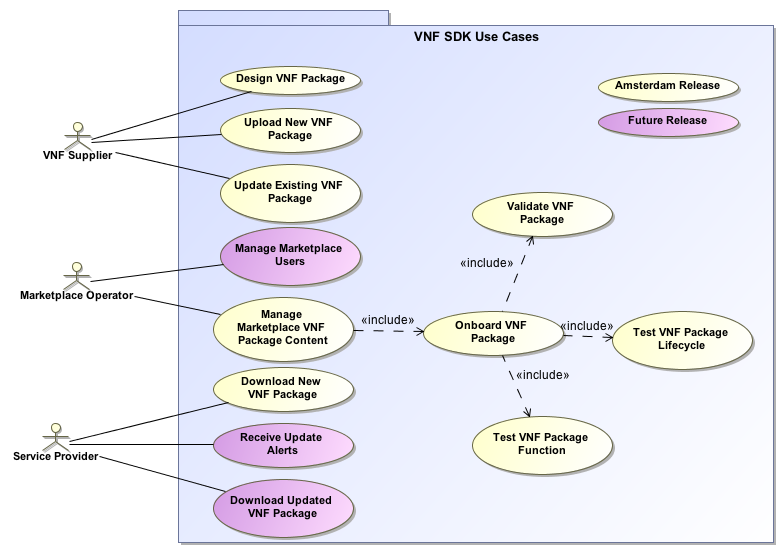Use Case Key Information
| Topic | Description | Wiki |
| Base Wiki | ||
| Requirements Jira | REQ-1 (requirements Jira clone) | REQ-387 - Getting issue details... STATUS |
| Requirements Page link | Guilin release - functional requirements proposed list#5GNetworkResourceModel(NRM)Configuration | |
| Architecture S/C | Presentation made to the Architecture S/C | |
| Key Contacts & Leads |
BUSINESS DRIVER
This section describes Business Drivers needs.
Executive Summary - This requirement enhances the Network Resource Management (NRM) configuration management provided in R6. NRM configuration management allows the service providers to control and monitor the actual configuration on the Network Resources. They may be used within the first PNF or VNF instantiation or routine operations after PNFs or VNFs are running. Planned enhancements for R7 include checking SO BBs (ConfigDeployBB) applicability on NRM Configuration, CDS SS gRPC API with RestfultExecutor, full automation for integration test (CIST).
Business Impact - Network resources are the fundamental resources to the mobility networks. Only the network resource are ready then the service like eMBB service can be instantiated. Better service quality can be achieved by suitable NRM configuration management.
Business Markets - Considering the Network Resources are basic for mobility network, New 5G deployments as well as legacy 4G systems should be considered as target markets. Both radio and core and other sub-network domains could also benefits from it.
Funding/Financial Impacts -Orchestrating and Controlling the network resources could reduce the OPEX.
Organization Mgmt, Sales Strategies -There is no additional organizational management or sales strategies for this use case outside of a service providers "normal" ONAP deployment and its attendant organizational resources from a service provider.
Development Status
| PROJECT | PTL | User Story / Epic | Requirement |
| A&AI | |||
| AAF | No Active PTL | ||
| APPC | |||
| CLAMP | |||
| CC-SDK (inc. CDS) | |||
| DCAE | |||
| DMaaP | |||
| External API | |||
| MODELING | |||
Multi-VIM / Cloud | |||
| OOF | |||
| POLICY | |||
| PORTAL | |||
| SDN-C | |||
| SDC | |||
| SO | |||
| VID | |||
| VNFRQTS | |||
| VNF-SDK |
List of PTLs:Approved Projects
*Each Requirement should be tracked by its own User Story in JIRA
Use Case Diagram
Use cases define how different users interact with a system under design. Each use case represents an action that may be performed by a user (defined in UML as an Actor with a user persona).
Use Case Functional Definitions
Use Case Title | Title of the Use Case |
Actors (and System Components) | The list of Actors and System Components that participate in the Use Case |
Description | Short overview of the Use Case |
Points of Contact | Authors and maintainers of the Use Case. Use Case Lead, Key Use Case members and code contributors. |
Preconditions | A list of conditions that are assumed to be true before the Use Case is invoked Includes description of Information Consumed |
Triggers / Begins when | Describes the trigger for beginning the Use Case |
Steps / Flows (success) | Describes the sequence of steps and interactions that occur during the Use Case (may include: description, data exchanges, functionality, state changes) Interaction diagrams may be included or referenced |
Post-conditions | The expected results of the execution of the Use Case Includes description of Information Produced |
Alternate / Exception Paths | Description of any exceptions or special process that could occur during Use Case |
Related Use Cases | List of the Use Cases referenced by this Use Case |
Assumptions | Describes any assumptions that are made for this use case |
Tools / References / Artifacts | List of any tools or reference material associated with this Use Case as well as any JIRA trace-ability. List of any associated diagrams or modelling artifacts associated with the Use Case |
Testing
Current Status
Testing Blockers
- High visibility bugs
- Other issues for testing that should be seen at a summary level
- Where possible, always include JIRA links
End to End flow to be Tested
**This should be a summary level Sequence diagram done in Gliffy**
Test Cases and Status
| 1 | There should be a test case for each item in the sequence diagram | NOT YET TESTED |
| 2 | create additional requirements as needed for each discreet step | COMPLETE |
| 3 | Test cases should cover entire Use Case | PARTIALLY COMPLETE |
| 4 | Test Cases should include enough detail for testing tea |
